What Are the Different Types of Tummy Tuck Surgeries?
Body Plastic Surgery
Everyone dreams of having a flat and firm stomach with tight skin. Tummy tuck surgery is a cosmetic surgery that improves the abdomen's shape by removing excess fat and loose skin. Like other major surgeries, the tummy tuck has some benefits and side effects that should be considered before the operation. This article discusses different aspects of tummy tuck surgery and enumerates its risks and advantages.
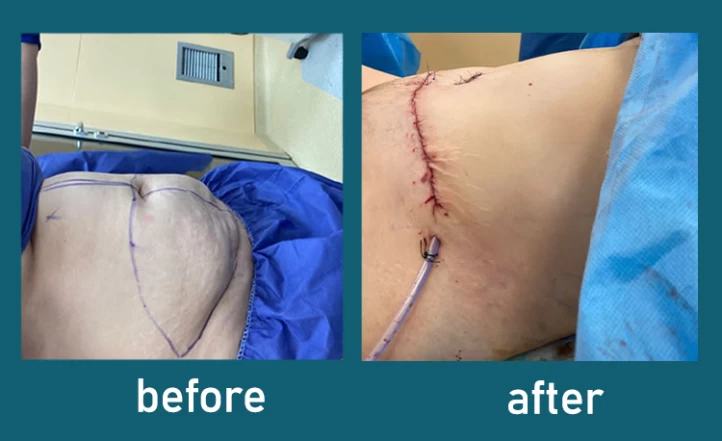
What Is a Tummy Tuck?
People might have extra fat and skin around their abdomen for several reasons, including significant changes in weight, pregnancy, aging, previous surgeries, or genetic problems. Tummy tuck surgery, also known as abdominoplasty and mommy makeover, is a major procedure in which stubborn fats, loose skin, and stretch marks are removed from the abdomen, especially the areas below the belly button. Also, the wide navels can get smaller, and the abdominal muscles are tightened in this operation.
Interestingly, a mommy makeover can be done with other cosmetic surgeries such as breast reduction, augmentation, and liposuction. People who have done liposuction can undergo abdominoplasty surgery to eliminate the excess skin and have a better body contour.

Types of Tummy Tuck
Today, various types of tummy tuck surgery are practiced throughout the world. In this section, we introduce six common types of abdominoplasty and compare their procedures:
- Full or Standard Tummy Tuck
- Mini Tummy Tuck
- Extended Tummy Tuck
- Fleur-De-Lis Tummy Tuck
- Reverse Tummy Tuck
- Endoscopic Tummy Tuck
Full or Standard Tummy Tuck
This method is suitable for people between the ages of 21 and 45 who have moderate excess weight and a healthy lifestyle. A full tummy tuck involves a big horizontal incision from hip to hip and often includes repositioning of the navel. The advantage of a standard tummy tuck surgery is that all excess skin and tissues are removed, and the skin is tightened. However, this method involves lots of scarring, and recovery takes two to four weeks.
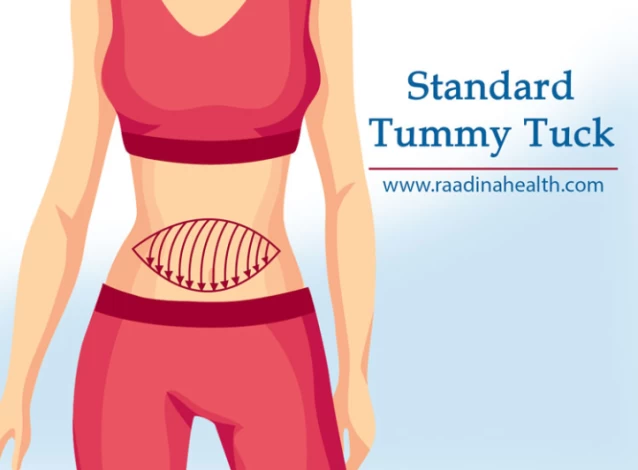
Mini Tummy Tuck
This operation suits those with loose skin or minor excess weight below the belly button. In a mini tummy tuck, the incision is shorter and is made under the bikini line. The advantage of this procedure is that the lower abdominal muscles get tightened, but the navel is not repositioned. Since a mini tummy tuck is less invasive than a full tummy tuck, it has a shorter recovery period, and you can get back to work 7 to 10 days after the surgery.
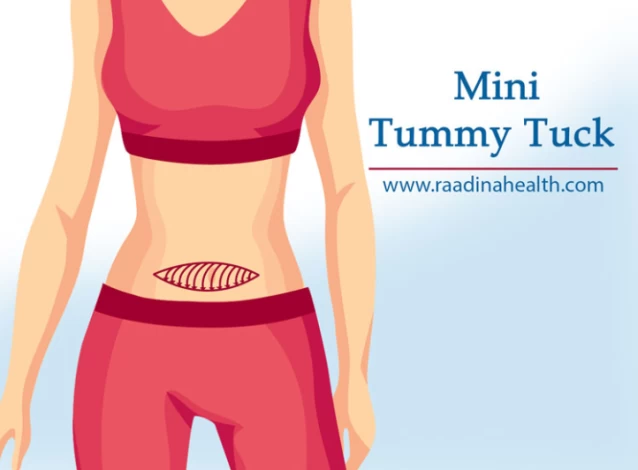
Extended Tummy Tuck
An extended tummy tuck is a more invasive and extensive version of a full tummy tuck and is mainly done for the ones with large abdomen and love handles or a significant amount of fat on their back. This method involves a big horizontal incision from the back of the hipbone, along the sides and the lower abdomen, and then to the back of the opposite hipbone. Although extended tummy tuck surgery ends in more scarring and repositioning of the navel, its results are prominent as the tissue and loose skin from the abdominal and flanks are entirely removed.
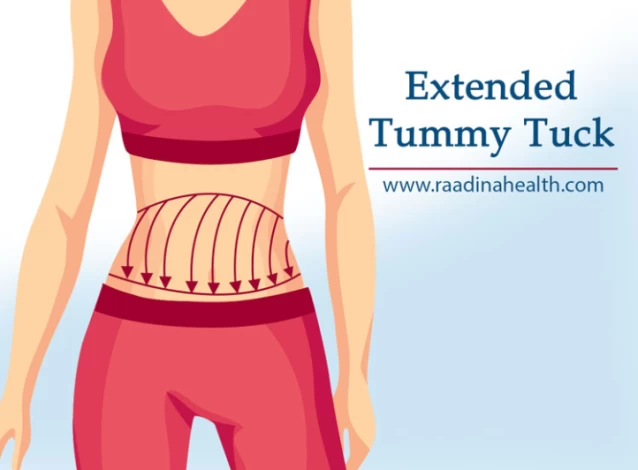
Fleur-De-Lis Tummy Tuck
This technique is the most invasive type of abdominoplasty surgery and is mostly suitable for patients who have lost a lot of weight and have too much excess skin. This method can be performed after weight loss surgeries such as gastric bypass. In fleur-de-lis abdominoplasty, a large horizontal incision is made from hips to hips. Then, a vertical cut is made from the bottom of the ribs down to the pubic area, intersecting with the first incision. By making these incisions, the surgeon has more access to remove loose skin around the abdomen. The scars of a fleur-de-lis tummy tuck can take longer to heal, and you should stay at home for 4 to 6 weeks after the operation.

Reverse Tummy Tuck
Unlike other types of tummy tuck, which focus on the mid or lower abdominal parts, in reverse tummy tuck, the focus is on the upper abdomen regions. During the reverse tummy tuck, the surgeon makes an incision across the chest and underneath the breasts to remove the excess skin and lift the upper abdomen.
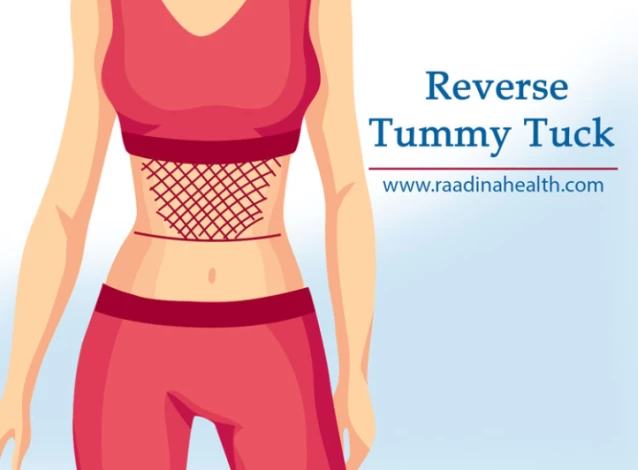
Endoscopic Tummy Tuck
To perform endoscopic abdominoplasty surgery, the surgeon makes several small incisions around the bikini line and on the bottom of the navel. Then, they use a tiny camera called an endoscope with a minor surgical instrument attached to it to operate. This method is minimally invasive and more suitable for patients with excess fat in their abdomen but a small amount of loose skin around it. The main advantages of this method are that its recovery period is just one week and involves minimum scarring.
When Is a Tummy Tuck Necessary?
People undergo tummy tuck surgery for various reasons, but mostly, they get this surgery due to having the following:
- Loose skin or deformed tissues after pregnancy and losing weight;
- Loose connective tissues around the abdominal muscles;
- Bulky love handles or pits in the waistline;
- Stretched belly button;
- Scars from an earlier surgery or a trauma;
- Pain in the back;
- Too much pressure on the bladder.
Fortunately, abdominoplasty can improve your appearance and overall health by removing extra fats, tissues, and skin. Also, you can have tummy tuck surgery and other operations such as hernia surgery, breast augmentation, and hip liposuction to maximize its effects.
Good Candidate for Tummy Tuck
Those who want to lose localized fats that are difficult to lose with diet and exercise alone and who are at a stable weight are the best candidates for abdominoplasty.
You should possess the following qualities in order to have tummy tuck surgery:
- Have firm, elastic skin around your abdomen;
- Don't smoke;
- Have a weak abdominal muscle that needs to be tightened;
- Not be pregnant or plan to become pregnant within six months of surgery;
- Engage in physical activity;
- Lead a healthy lifestyle.

On the other hand, if you have the following conditions, you are not a good candidate for tummy tuck:
- Having a life-threatening disease such as a heart problem or diabetes;
- Having a history of chronic infection;
- Having wound-healing problems;
- Having plans to get pregnant in the future;
- Having a BMI greater than 30;
- Having had a previous abdominal surgery that caused significant scar tissue.
Dos and Don'ts Before Abdominoplasty
How you prepare for abdominoplasty surgery can greatly affect how well your body responds to the surgery and how easy your recovery period will be. So, before undergoing abdominoplasty, consider the following tips:
- Your doctor will ask you to take a complete blood count (CBC) test and take several pictures of your abdomen to make sure you are in good health;
- Discuss your expectations with your surgeon and ask all your questions before the surgery;
- Provide a detailed medical history consisting of your current and past medical conditions as well as your recent weight gain and loss;
- If you have any allergy, inform your doctor;
- Your surgeon may make changes to the medications you are already taking. You should follow their order to minimize the risks of tummy tuck;
- Get mentally prepared for the surgery and the weeks after that;
- Stop smoking for at least six weeks before surgery, as it can cause infection and necrosis;
- Get as close to your ideal weight as possible;
- Avoid taking aspirin, anti-inflammatory drugs, and herbal supplements, as they can increase the risk of bleeding;
- Maintain a stable weight for at least a year before getting a tummy tuck surgery;
- Make plans for your post-op period;
- Avoid drinking and eating for at least 8 hours before the operation.

What to Do the Night Before Tummy Tuck Surgery?
If you wonder what to do the night before tummy tuck surgery, read the following:
- Drink as much water as you can to be hydrated on the morning of the surgery;
- Have a light meal rich in protein at night (for example, grilled chicken breast);
- Take a shower and shave the operating part;
- Avoid taking any medication that may hinder your operation;
- Remove all of your jewelry, including your body piercings;
- Avoid using body lotions, hair sprays, and other products containing alcohol and paraben.
What to Expect After Tummy Tuck?
You will stay in the hospital for 24 to 72 hours because a stomach tuck is regarded as a major operation under general anesthesia. A dressing will be applied to your wounds during this period, and a drain will be inserted into your incisions to drain any fluid. You might not be able to eat and drink normally for a few days following the procedure, and you most likely have moderate to severe abdominal pain that can be managed with prescribed painkillers.
You won't be able to drive for at least two weeks after surgery, so you'll need someone to drive you home after you're released. Eat a balanced diet and sleep with your knees bent when you're at home. It should be noted that after stomach tuck surgery, you may experience pain, bruising, swelling, numbness, and scarring. However, these side effects will eventually go away as your wounds heal.

Tummy Tuck Recovery Week by Week
As mentioned earlier, the duration of tummy tuck recovery depends on the type of surgery, your health condition, and how well you take care of your body after the operation. Read on to get more information about eight weeks of abdominoplasty recovery.
Week 1 to 2
Do not engage in heavy activity during the first two weeks after the mommy makeover. Even minor aerobic activities or stretching exercises may cause swelling in the surgical area. However, light walking can help prevent the formation of blood clots. Refraining from sexual activity for at least two weeks is also recommended because it can increase swelling and bruising.
Week 2 to 4
During the second two weeks after abdominoplasty surgery, the pain, bruising, and feeling of tightness will gradually fade away, but you will still have swelling in the operated area. Also, a hard and pink line may form around your wounds, which is normal. You can return to your normal diet but must be more careful with your calorie intake to stay at your ideal weight range.
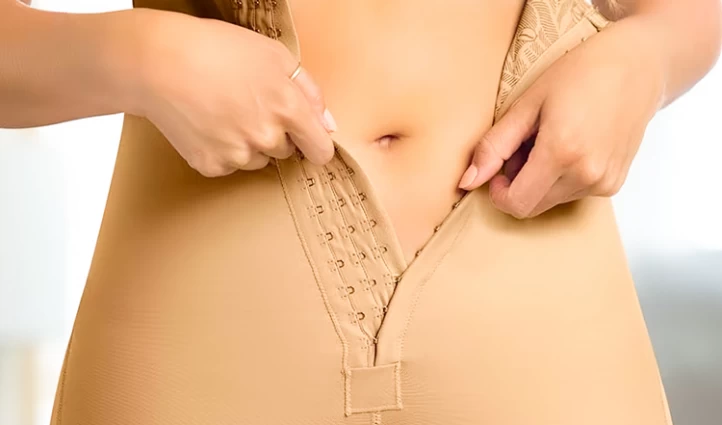
Week 4 to 8
From the fourth week onwards, you can return to your regular exercises, such as walking and light aerobics, but you should still refrain from heavy sports, including mountain climbing, weight lifting, or martial arts.
Week 8 and beyond
On the 8th week after the tummy tuck surgery, the results of your surgery are apparent, and the scars are paler than before. Although much of the swelling subsided within 8 to 10 weeks following the surgery, you will still have some swelling for the next four months.
Tummy Tuck Pros and Cons
Apart from its many aesthetic advantages, like a flat stomach and slim waist, a mommy makeover can also significantly lessen discomfort and enhance your health. The following are some benefits of tummy tuck surgery as a corrective procedure:
·It eliminates back pain because the abdominal muscles can better support your spine;
·It strengthens the abdominal muscles and repairs the separated muscles beneath your stomach so that your belly won't protrude any more;
·It improves your posture by tightening the abdominal muscles;
·It increases your self-confidence because you will be able to wear any clothes you want.
On the other hand, abdominoplasty has some disadvantages, too, such as:
·Severe bleeding and infection may occur if you have diabetes or high blood pressure;
·An asymmetrical surgical outcome is possible. Your body won't look the same on both sides; You might have trouble standing up straight for weeks;
·Nearly all stomach tuck procedures leave scars;
·Blood clots could form in your arteries and endanger your life;
·Wounds might not heal properly if your immune system is weak;
·It could result in pulmonary embolus, deep vein thrombosis (DVT), or damage to internal organs like blood vessels, muscles, or nerves;
·In certain patients, the numbness might last for a long time.
Tummy Tuck Surgery Side Effects
All surgeries have common risks, including blood clot formation, vomiting and nausea, bleeding, infection, and anesthetic problems. Continue reading to know more about the main tummy tuck side effects.
The following are the main side effects:
- Pain
- Swelling
- Seroma
- Bleeding and hematoma
- Necrosis
- Infection
- Numbness and burning sensation
- Scarring
Pain
Pain is expected, especially during the first two weeks after the tummy tuck surgery. However, contact your healthcare provider if you have severe cramps that regular pain medications cannot control.
Swelling
Swelling after tummy tuck is a common complication of the surgery. Still, you can minimize it by wearing the compression garment, walking slightly, getting enough rest, drinking plenty of water, and having a light diet.
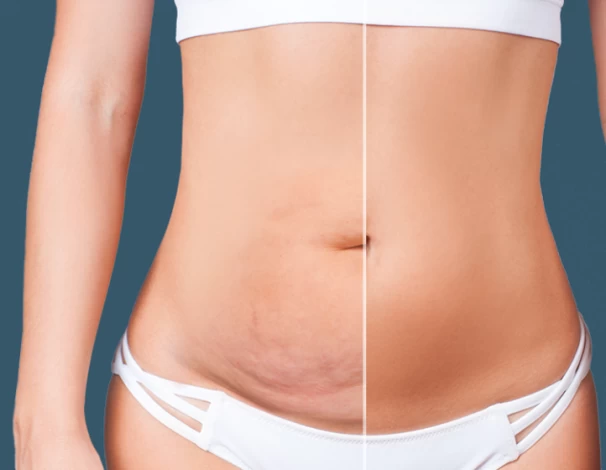
Seroma
A seroma is a sac containing fluid that forms under the skin or around the incision site. To reduce the risk of seroma formation, the surgeon may place a drainage tube in the abdomen to drain excess fluid. This drain is usually removed five to seven days after the surgery.
Bleeding and hematoma
Bleeding and hematoma are considered the common side effects of a tummy tuck. But if you have experienced severe bleeding or painful hematoma, contact your surgeon immediately.
Necrosis
During abdominoplasty surgery, blood supply may be disrupted in certain areas, leading to necrosis and tissue, skin, or fat death. Depending on the extent of tissue damage, the injury resolves within a few weeks. Still, sometimes, the patient must undergo surgery to remove the dead tissue. It should be noted that smoking increases the risk of necrosis; therefore, it is strongly recommended that patients avoid smoking for at least six weeks before and after the operation.
Infection
Infection can be a life-threatening side effect of abdominoplasty if not cured on time. So, you must take an entire course of antibiotics to prevent the wound infection. Some main signs of infection after a tummy tuck include increased heat and redness at the incision site, fever above 38˚, bad smell from the incisions, and green or yellow pus from the wounds.
Numbness and burning sensation
Sometimes, abdominal nerves may be damaged during abdominoplasty surgery. This may cause patients to notice increased or decreased sensations in some areas of the abdomen or upper thighs. Patients may also experience strange sensations such as tingling or burning in the operated area. These changes are often temporary and should be resolved several months after surgery. However, in some cases, they can become permanent.
Scarring
Scarring is an inevitable complication of abdominoplasty. Although the surgeon often makes incisions in the less visible parts of the body, such as the bikini line, some patients may experience severe scarring (keloid or hypertrophic scars) on the more apparent parts of their body.
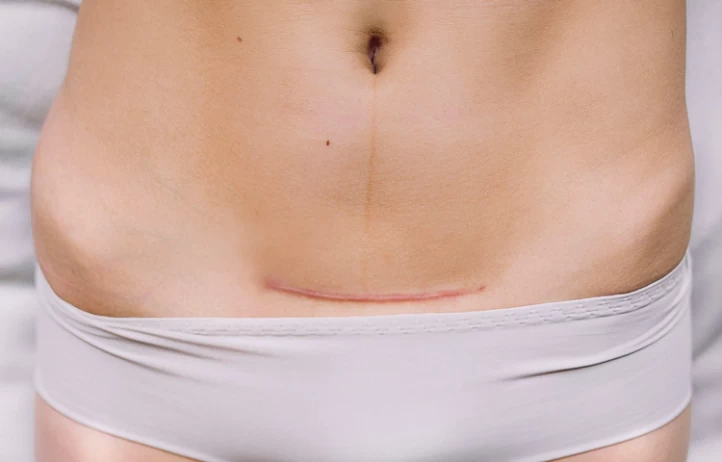
Tummy Tuck Complications Years Later
Besides the early complications of a tummy tuck, some complications may last longer. Despite being rare, you probably experience the following side effects years after the tummy tuck surgery:
- Change in the sensation of the operated area;
- Pus coming out of the belly button;
- Chronic infection;
- Deep scars or keloids;
- Skin discoloration;
- Sharp nerve pain;
- Consistent swelling that lasts for more than a year.
Tummy Tuck Results
After tummy tuck surgery, your abdominal muscles are more vulnerable and need much time to heal. Therefore, most surgeons ask their patients to refrain from strenuous activity for six weeks after abdominoplasty. You can ask your doctor when you can start exercising, but it is suggested that you start walking around the house a week after the operation. You can also walk up and down the stairs when you don't feel a sharp sore in your stomach. From the second week onwards, you can have five to 10-minute long walks, but you should not go jogging or running until your doctor permits you.
Tummy Tuck in Iran
Many foreign patients declare Iran the best country for tummy tuck surgery. But why is that? Selecting the right plastic surgeon for your tummy tuck is the first step to having an ideal body. Iranian plastic surgeons are board-certified and have extensive experience in body plastic surgery, especially liposuction and tummy tuck. By getting abdominoplasty in Iran, you can have a high-quality surgery at a fair price and enjoy its results afterward.
For more information about the price of tummy tucks and the best abdominoplasty surgeon in Iran, contact the Raadina team.
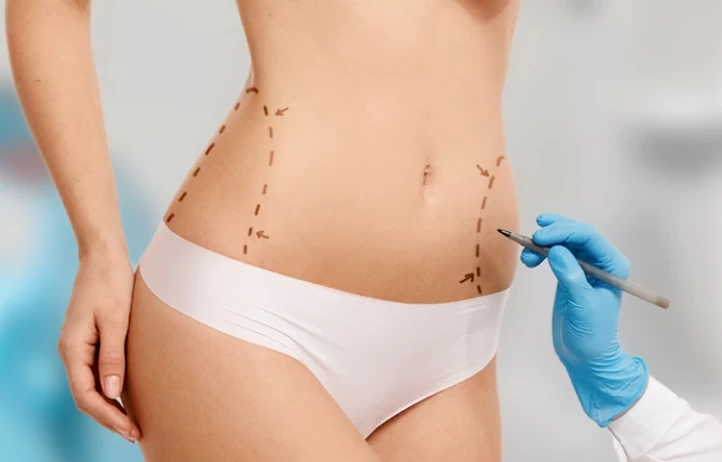
FAQs about Tummy Tuck Surgery
1) How can I get rid of fibrosis after a tummy tuck?
Tummy tuck fibrosis is a bit harder to deal with than normal scars. Topical creams, laser therapy, ultrasound therapy, manual lymphatic drainage, or a minor surgery can treat them.
2) Is a tummy tuck painful?
A tummy tuck is painful compared to other cosmetic surgeries such as liposuction or breast augmentation. In fact, on a scale of 1 to 10, tummy tuck pain is estimated at 6 to 7 on the first week and 3 to 4 on the second week.
3) How long does a tummy tuck pain last?
The first week after the tummy tuck is the hardest, but over time, the pain subsides. In general, the tummy tuck pain should be diminished after two weeks.
4) How long after an abdominoplasty can I get pregnant?
You should avoid getting pregnant for at least a year after abdominoplasty as your muscles and tissues need time to heal. In general, it is recommended to get a tummy tuck when you no longer intend to get pregnant because pregnancy causes the muscles to return to their pre-surgery state.
5) Do I lose weight after a tummy tuck?
Abdominoplasty surgery is not a weight-loss procedure so you won't lose too much weight afterward. However, you will look slimmer and thinner after the tummy tuck as your excess tissues and fats are removed. If you want to know more about weight loss after a tummy tuck, read this article.
6) When can I return to work after a tummy tuck?
Depending on your overall health condition and how physically demanding your job is, you can return to work two to four weeks after the surgery.
7) What day after tummy tuck is the hardest?
The first three to five days after the tummy tuck are the hardest, as the pain is at its maximum. Fortunately, you can manage your pain by taking strong painkillers.
8) Who should not get a tummy tuck?
People with a BMI over 30, blood clotting disorders, diabetes, and high blood pressure are considered less ideal candidates for a tummy tuck.
9) How long does a tummy tuck last?
Should you maintain a healthy and steady lifestyle, the results of the tummy tuck surgery will last forever. Remember that as you age, your body changes, and you may naturally gain weight. So, having a regular exercise plan for the rest of your life is necessary.
10) How long is a tummy tuck surgery?
Depending on the extent and technique of the operation, it takes two to three hours for the surgery to finish. However, it would be best if you planned to be at the hospital or clinic for at least four hours.
 WhatsApp
WhatsApp
 Telegram
Telegram
 Facebook
Facebook
 Email
Email



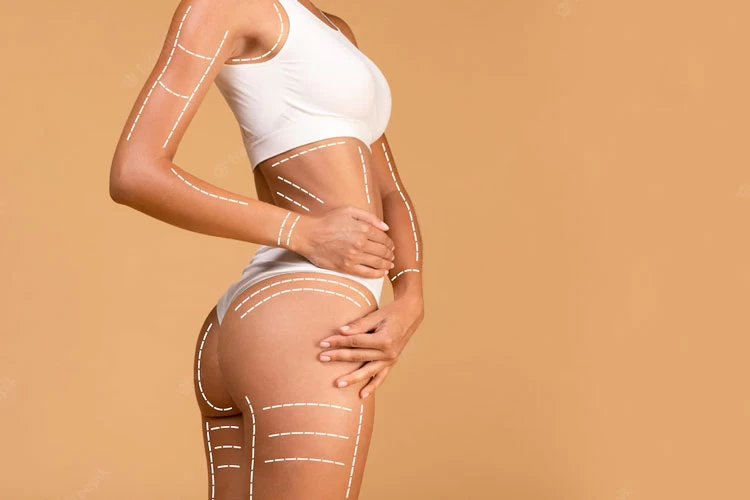


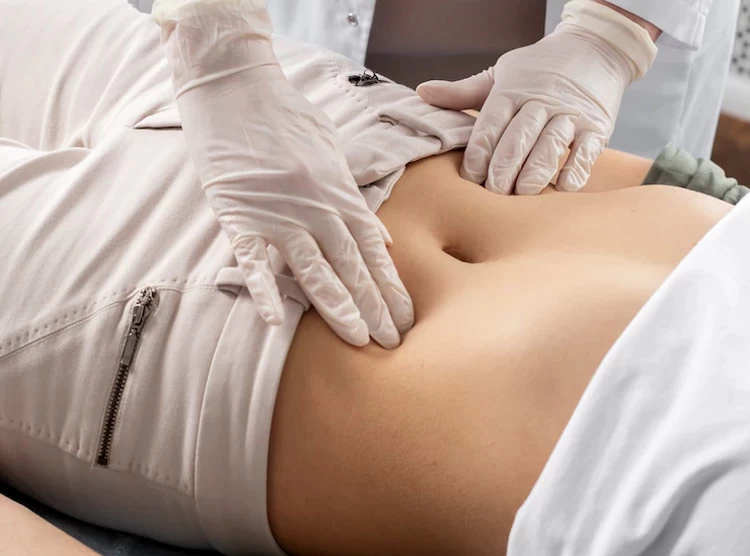

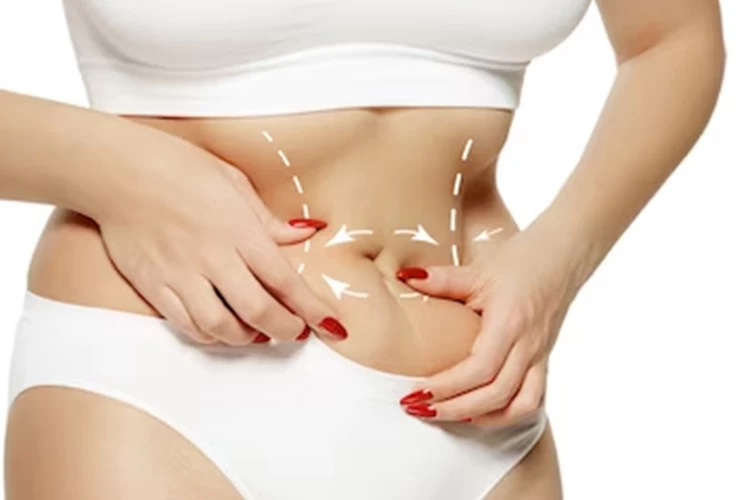

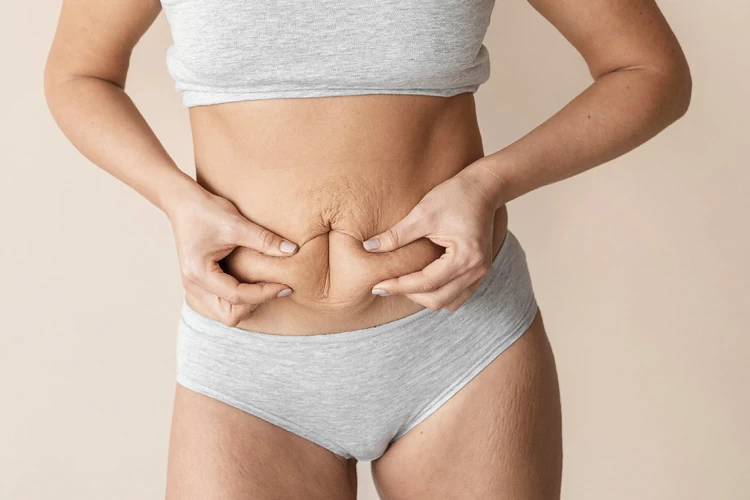
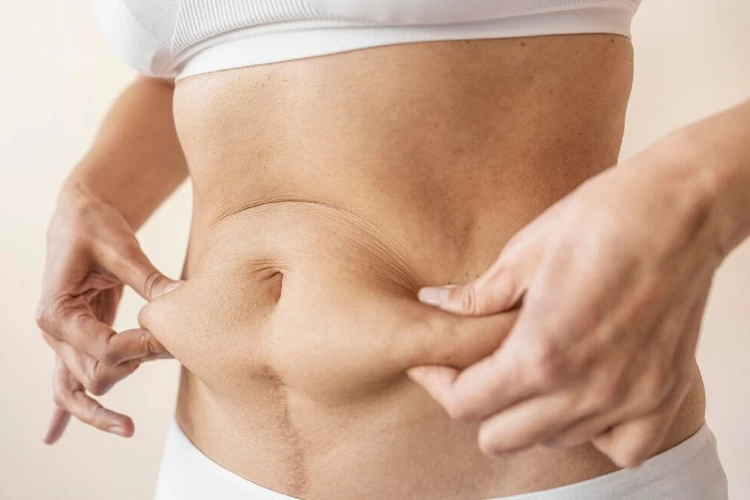

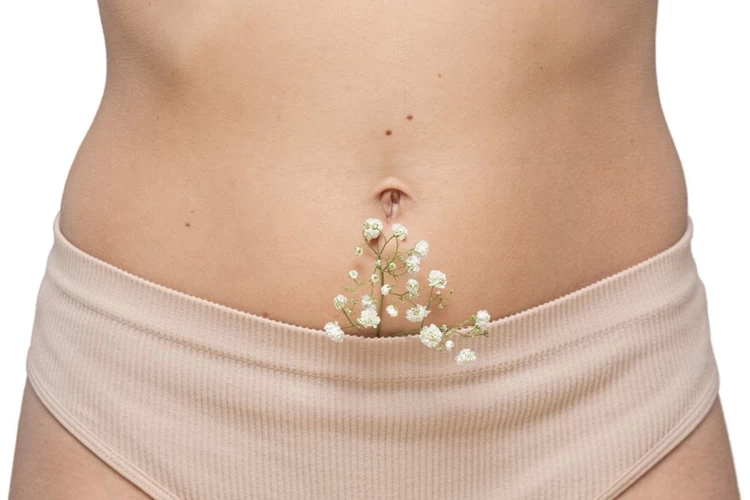


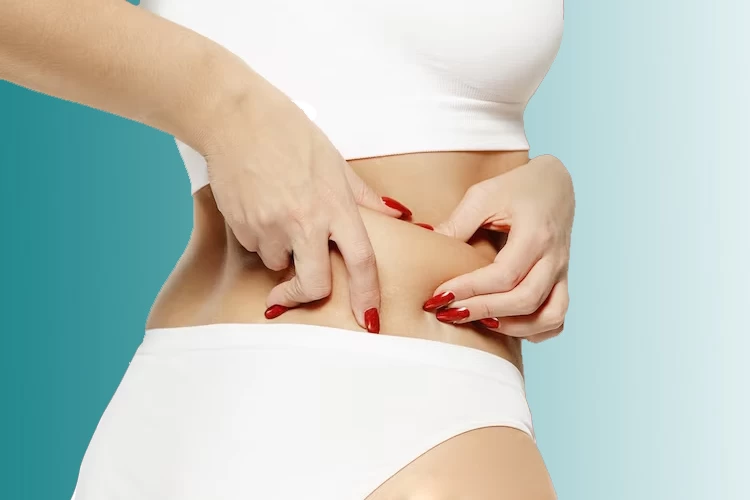
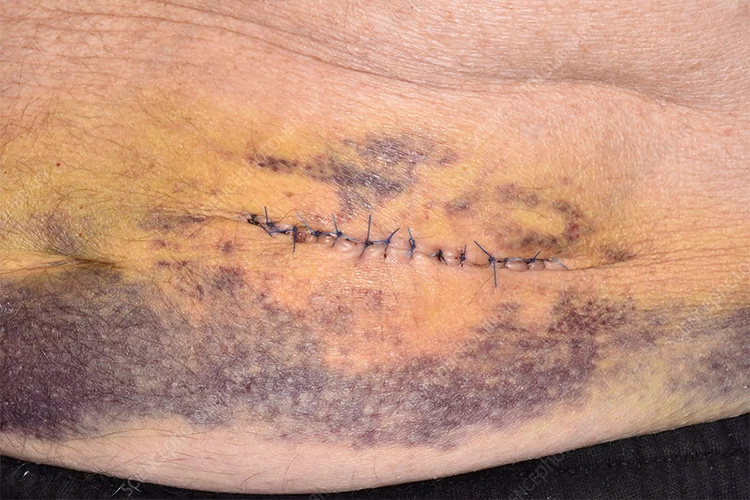

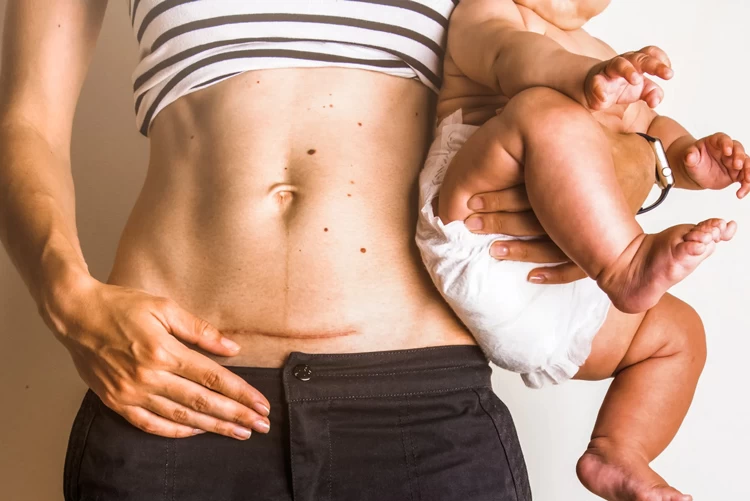

User
-What Is the Best Age to Get a Tummy Tuck?
Habib Ebrahimi
-You can get tummy tuck at any age, if only you are healthy enough and have good skin tone. However, most surgeons recommend getting abdominoplasty in the 30s and early 40s because the skin is still elastic and the woman has almost passed the childbearing age.
User
-What is tummy tuck mortality rate? I'm a little nervous!
Habib Ebrahimi
-Being a safe procedure, tummy tuck risks of death is lower than 0.02%.
User
-Is it possible for fat to come back after a tummy tuck?
Habib Ebrahimi
-Fortunately, no. Fat cells that are removed out of the body during the tummy tuck cannot grow back in the same spot. But if you gain weight after the procedure, the fat may be stored in other parts of the body such as legs, chin, arms, and breasts.
User
-What Should I pack for tummy tuck surgery during my hospital stay?
Habib Ebrahimi
-You have to pack headphones, books, comfortable clothes and socks, mobile charger, laptop, high-fiber snacks, ice pack gels, and essential hygiene items for your abdominoplasty surgery.
User
-I've been thinking about getting a tummy tuck after my C-section, but I'm uncertain about the safety and feasibility of the procedure. Considering the previous surgery and potential scarring, I'm hesitant and curious about the risks involved. Can anyone share their experiences or insights regarding undergoing a tummy tuck post-C-section? I want to make an informed decision and ensure the best possible outcome for my health and appearance.
Habib Ebrahimi
-Hello dear friend,
Thank you for reaching out and sharing your concerns! It's completely natural to have doubts about considering a tummy tuck after a C-section. While it's a significant decision, it's essential to prioritize your health and well-being. Consulting with a reputable plastic surgeon is the first step toward understanding the possibilities and risks involved. They can provide personalized advice based on your medical history and goals. Read this article on our website for more detailed information on tummy tucks after C-sections.
Habib Ebrahimi
-Hello dear friend,
Thank you for reaching out and sharing your concerns! It's completely natural to have doubts about considering a tummy tuck after a C-section. While it's a significant decision, it's essential to prioritize your health and well-being. Consulting with a reputable plastic surgeon is the first step toward understanding the possibilities and risks involved. They can provide personalized advice based on your medical history and goals. Read this article on our website for more detailed information on tummy tucks after C-sections.